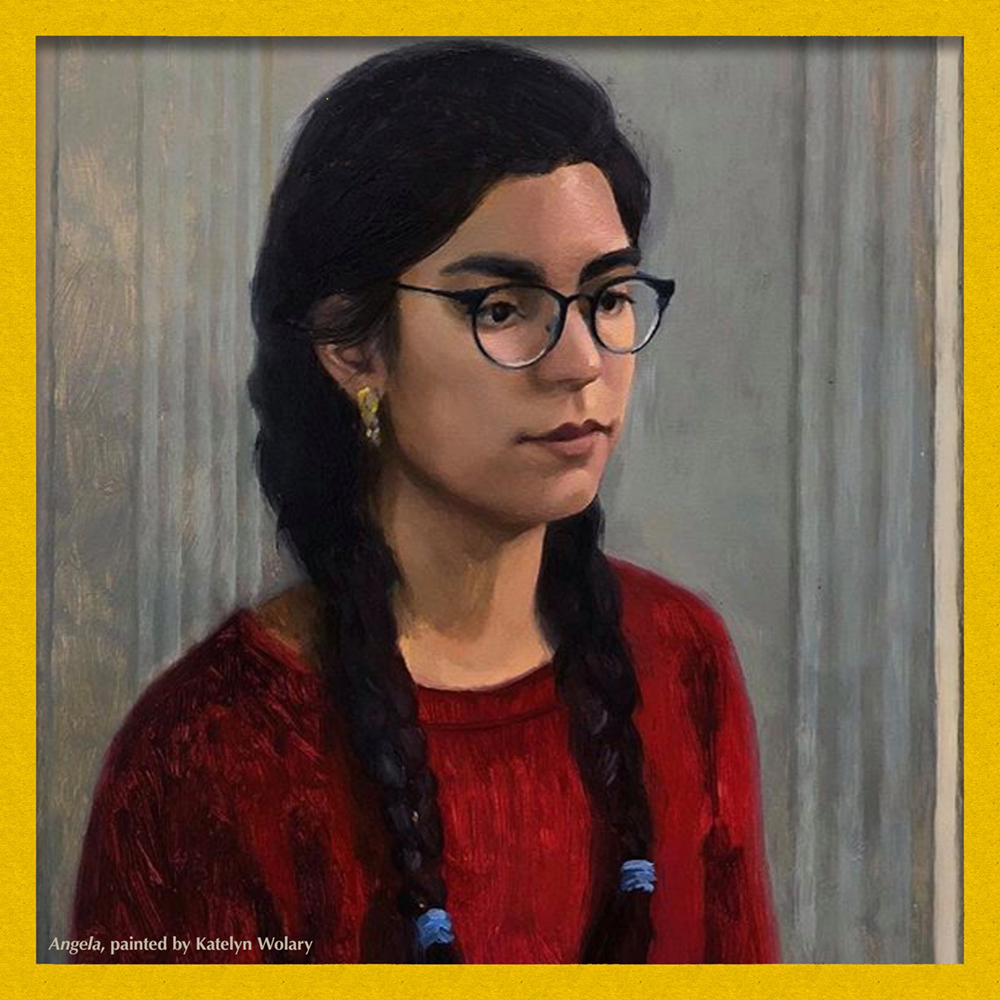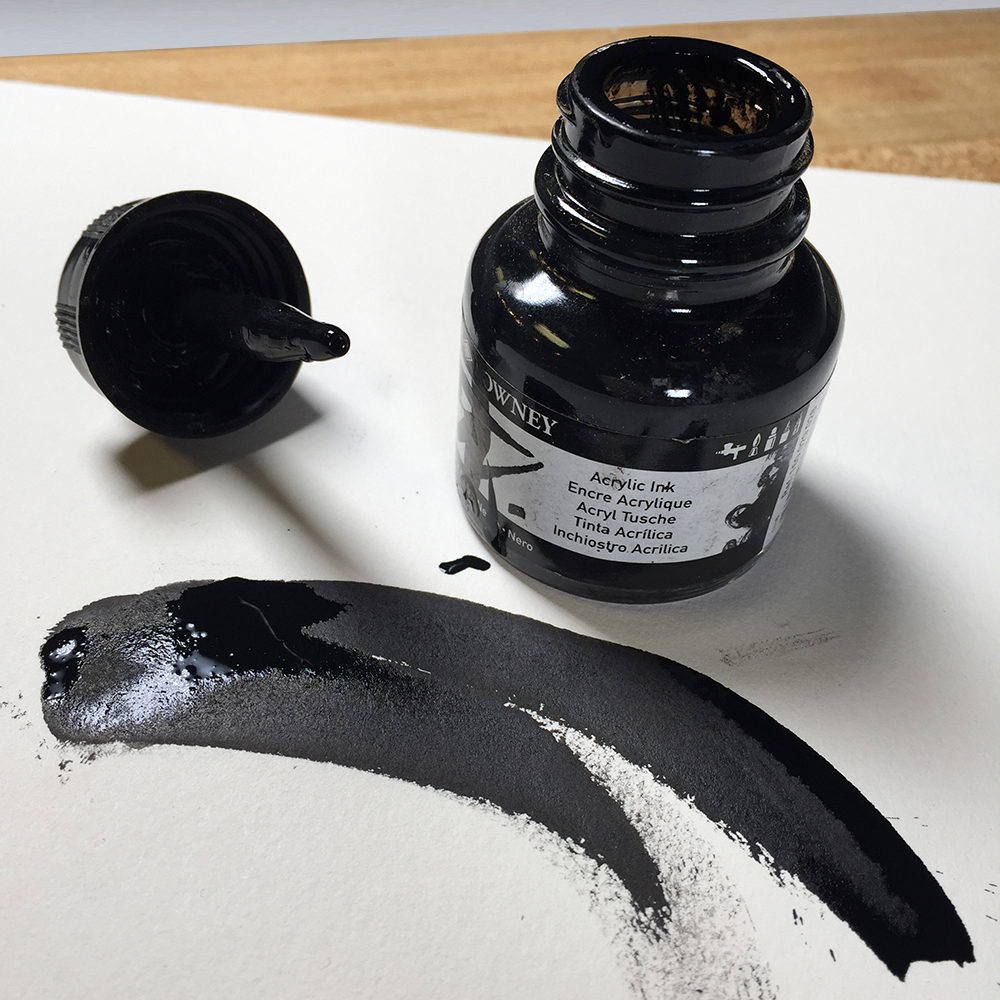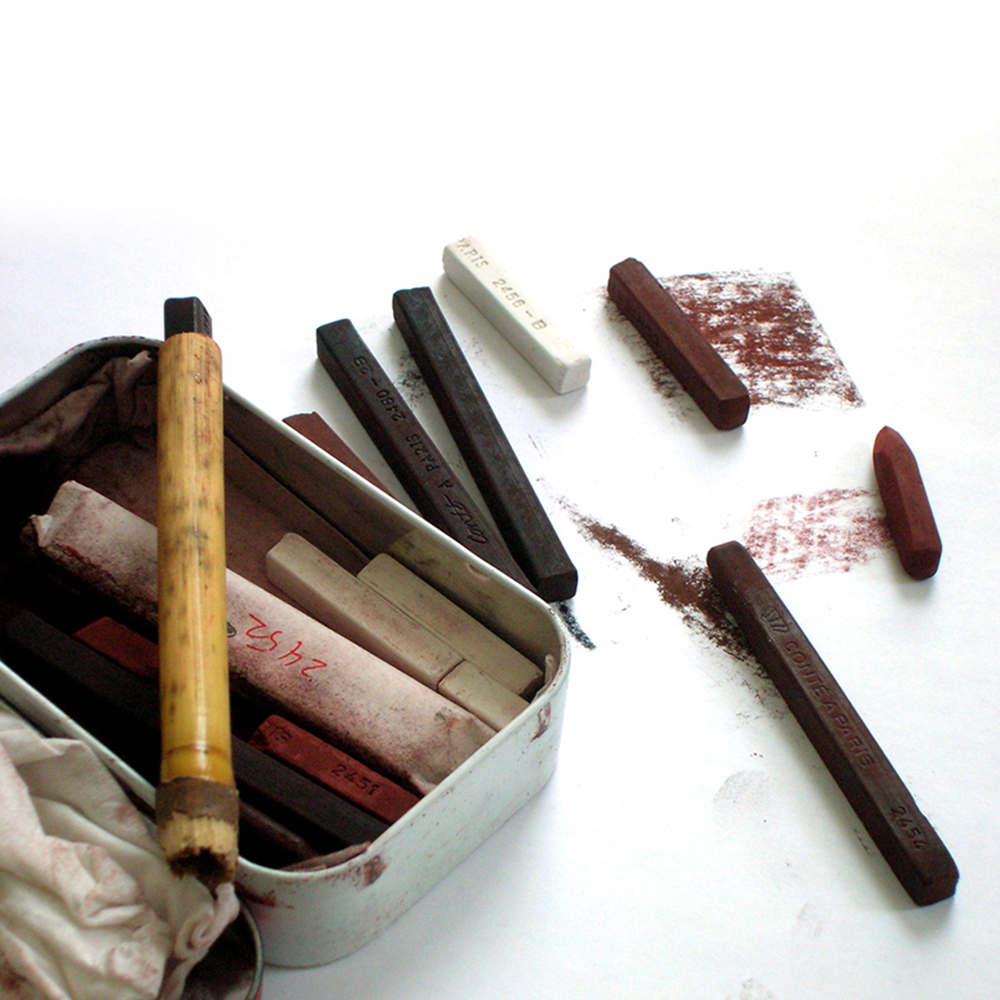September 8-29
Registration Deadline:
Thursday, September 5, 2019
Did you know that charcoal is your simple, fluid, dense, soft, hard, delicate, fast, bold, messy, clean, and above all, forgiving best friend? Charcoal can help you produce countless effects, but only if you know how to get it on the page, how to get it off, and how to move it around to create a variety of illusionistic effects. Come with a playful mindset and a shirt you don’t mind getting dirty.
Topics covered:
• Vine vs. Compressed
• What is this chamois for (and how do I pronounce it)?
• Toning paper (why and how)
• Hatching, informative mark making
• Building value with different utensils, layering, and marks.
• Applying value and directional mark making to key geometric forms
• Recognizing these shapes and marks in more complicated work
Charcoal Materials List
• Vine Charcoal (smallest amount)
• General’s Compressed Charcoal*
• General’s Soft, Medium, and Hard Charcoal Pencils (one of each) *
• Artist Chamois (this is a yellowish cloth)
• General’s Factis Mechanical Eraser
• Staedtler Mars Plastic Eraser
• Strathmore 300 Series Charcoal Paper – 9x12” (feel free to go larger in size if you prefer, but not larger than 18x24”)
• PanPastel Soft Tools Knife and Covers (These come in packs and singles. You’ll only need one. Any shape is fine.)
*While brands do not matter immediately and preferences are individual, General’s is usually the least expensive. You’re welcome to experiment with various brands.
|
November 3-24
Registration Deadline:
Thursday, October 31, 2019
Fun fact: Getting comfortable with graphite provides access to an exciting world of creative mobility like nothing else! It is one of the easiest materials to carry with you wherever you go, which makes it the perfect tool for keeping you consistently learning and training your hand. In this 4-week class, we will work on creating visual effects ranging from the studious and precise to the expressive and bold. We’ll find those effects and mark-making in master drawings, and we’ll discuss the role of a sketchbook in your studio practice.
Topics covered:
• Why are there so many pencils?
• Hatching and informative mark making
• Reductive and additive methods
• Applying value and directional mark making to key geometric forms
• Recognizing these shapes and marks in more complicated work
• Why your eraser is your friend (and not just a way to hide your mistakes)!
• Why do we have sketchbooks?
• How to make a sketchbook
Graphite Materials List
• Derwent Soft Tin Pencil set of 12 OR Faber Castel pencil set of 12
• Drawing 160 Artist paper pad OR Strathmore 400 series drawing pad (minimum size 9x12”, feel free to go larger in size if you prefer but not larger than 18x24”)
• Handheld, self-containing sharpener (any brand)
• General’s Factis Mechanical Eraser
• Staedtler Mars plastic eraser
|
January 5-26
Registration Deadline:
Thursday, January 2, 2020
Without a doubt, ink is one of the most expressive and liberating materials with which to draw. This January, we will explore how to work with this medium to create specific effects, as well as how to take an occasional backseat to the surprising things the ink can do naturally. Bring a playful and open mind to work with one of the most spontaneous materials in the Drawing Materials sequence!
Topics covered:
• Creating value with ink washes
• Using an ink bottle and brushed vs. a brush pen
• Benefits to using a brush pen
• Hatching and directional mark making with pens
• Applying washes and different mark making to key geometric forms
• Recognizing these shapes and marks in more complicated works
• How is ink different than materials with which you’re already familiar?
• How do we adapt to an “active” material?
Pen and Ink Materials List
• Set of Pentel Arts Hybrid Technica Ballpoint Ink Pens: 0.3, 0.4, 0.5, 0.6, 0.8m
• Pentel Aquash Brush Pen
• Sennelier Shellac Based Ink (preferred color: sepia)
• Higgins Black India Ink (minimum size: 1 oz. bottle)
• Two Small Brushes - one fluffy and one more pointed*
• A 6-Well Rectangular Plastic Palette (this should be under a dollar)
• Strathmore Bristol Paper Pad (minimum size: 9x12” feel free to go larger in size if you prefer but not larger than 18x24”)
*Feel free to wait until after the first class to get this if you’d like suggestions
|
March 8-29
Registration Deadline:
Thursday, March 5, 2020
Soft pastel is like visual-art Sudoku, sometimes puzzling and always a game. In this section, we’ll explore how to get interesting marks on the page, how to get the unhelpful ones off, and how to move this amazing dust around. You will learn how to layer pastels by working in both grayscale and color. We will discuss different approaches to using pastels and learn why there are so many different pastels available.
Topics covered:
• Understanding the difference between softer and harder soft pastels
• Why are there so many pastels available?
• Why are some pastels more expensive?
• Diversity of mark making, using the side of the pastel
• Working in a controlled grayscale palette
• Working in a controlled color palette
• Is this drawing or painting? Discussions of different approaches
• Using fixative- benefits and drawbacks
Soft Pastels Materials List
• One Sheet Of BFK Reves (these are sold by the sheet and are 22x30”)
• Chamois
• Pink Pearl Eraser
• Vine charcoal (smallest amount)
• General’s Compressed Charcoal
• 2 Great American Pastels: *, Zest 565.4, White 299
• 4 Rembrandt Pastels: * Indian Red 347.3,
Raw Umber 408.3, Olive Green 620.5, Mouse Grey 707.8
• 6 Prismacolor Nupastel Pastels: *
Lemon Yellow 217-P,
Light Ochre 243-P,
Burnt Orange 222-P,
Flamingo 406-P,
Sanguine 213-P,
Black 229-P
* Please get these colors exactly as we will be working with a set palette.
|
May 3-24
Registration Deadline:
Thursday, April 30, 2020
Have you ever picked up a Conté crayon by accident, only to realize that it’s so hard to erase? This material is waxier and harder than charcoal and often overlooked (or avoided) by beginning artists. Cleaner than Pastels and Charcoal, however, Conté creates can be excellent tool for on-the-go, energetic, and bold drawing. This month, we’ll explore the different application techniques Conté encourages, the sense of conviction necessary for this medium, how to create both subtle value shifts and descriptive marks, and the wonderful effects papers can have on Conté.
Topics covered:
• What is Conté made of?
• How is Conté different than charcoal?
• Benefits to toothy paper
• Benefits and drawbacks to toned paper
• Hatching, informative mark making
• Building value slowly
• Creating atmosphere
• Three Crayon Technique
• Applying value and directional mark making to key geometric forms
• Recognizing these shapes and marks in more complicated work
Conté Materials List
• Stonehenge Paper Sheet Warm White 22”x30”
• Stonehenge Paper Sheet White 30”x 40”
• Conté Crayon Matchbox 4 Pack
• General’s Factis Mechanical
• Staedtler Mars plastic eraser
|
|









